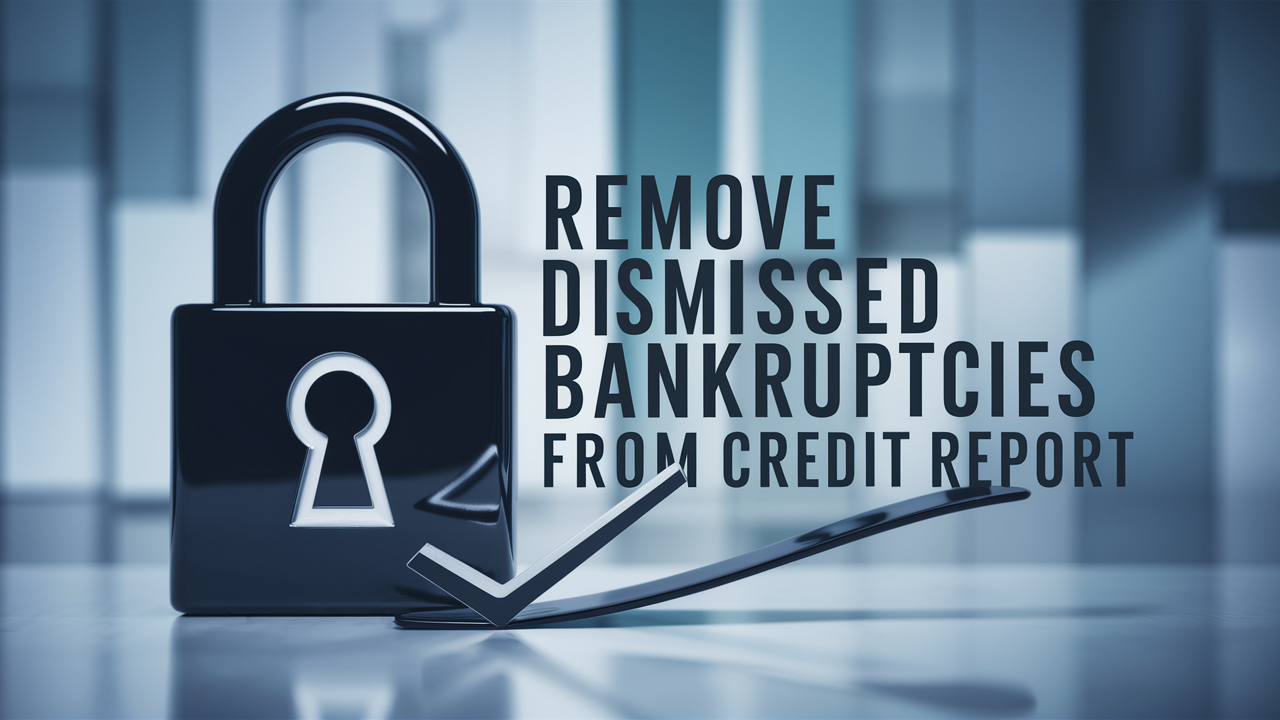How To Get Collection Off Credit Report?
Facing a collection account on your credit report can be daunting, but understanding your rights and the available strategies is the first step to removing it. This guide will empower you with the knowledge and actionable steps needed to effectively get collection accounts removed from your credit report, improving your financial future.
Understanding Collection Accounts
A collection account appears on your credit report when a debt that you have defaulted on is sold by the original creditor to a third-party debt collector. This collector then attempts to recover the outstanding amount. These accounts can significantly damage your credit score, making it harder to secure loans, mortgages, or even rent an apartment. Understanding the nature of these accounts is crucial for developing an effective removal strategy. In 2025, the impact of collection accounts on credit scores remains substantial, with FICO scores potentially dropping by 50-100 points or more depending on the severity and age of the debt.
What is a Collection Agency?
A collection agency is a business that specializes in recovering debts that are past due. When an original creditor exhausts its efforts to collect a debt, it may sell the debt to a collection agency for a fraction of its value. Alternatively, the creditor might hire the agency to collect the debt on its behalf, paying the agency a commission. The debt collector then has the legal right to pursue you for the payment. This can include contacting you directly, sending letters, and in some cases, taking legal action.
Why Do Collection Accounts Hurt Your Credit?
Collection accounts are considered severe negative information on a credit report. They signal to lenders that you have a history of not meeting your financial obligations. This increases the perceived risk for any future lender, leading to higher interest rates or outright denial of credit. The presence of a collection account can also affect your credit utilization ratio and overall credit mix, further impacting your score. According to recent analyses in 2025, a single collection account can reduce your FICO score by an average of 75 points, and multiple collections can have an even more devastating effect.
Types of Debts That Go to Collections
Various types of debts can end up in collections. These commonly include:
- Credit card debt
- Medical bills
- Personal loans
- Auto loans
- Mortgage payments
- Utility bills
- Student loans (though these have specific federal protections)
It's important to note that even small amounts, like unpaid parking tickets or minor medical co-pays, can eventually be sent to collections if left unresolved. The key is that the debt is significantly past due and the original creditor has given up on collecting it directly.
Your Rights and Key Laws
When dealing with collection agencies, it's vital to know your rights. Several federal laws are in place to protect consumers from abusive or deceptive debt collection practices. Understanding these laws empowers you to interact with collectors effectively and ensures they operate within legal boundaries.
The Fair Debt Collection Practices Act (FDCPA)
The FDCPA is the cornerstone of consumer protection in debt collection. Enacted in 1977, this federal law applies to third-party debt collectors (not original creditors, though some states have laws that cover original creditors). The FDCPA prohibits debt collectors from engaging in unfair, deceptive, or abusive practices. Key provisions include:
- Communication Restrictions: Collectors cannot call you at inconvenient times (generally before 8 a.m. or after 9 p.m. local time) or at your place of employment if they know your employer prohibits such calls.
- Harassment: They cannot use threats, curses, or other abusive language. They also cannot repeatedly call to annoy or harass you.
- Misrepresentation: Collectors cannot lie about the amount of debt, impersonate government officials, or threaten legal action they do not intend to take or cannot legally take.
- Validation of Debts: Within five days of their initial communication, collectors must send you a written notice detailing the amount of the debt, the name of the creditor, and your right to dispute the debt within 30 days.
Violations of the FDCPA can result in statutory damages, actual damages, and attorney fees. In 2025, the Consumer Financial Protection Bureau (CFPB) continues to enforce the FDCPA vigorously, with numerous enforcement actions and consumer complaints highlighting its importance.
The Fair Credit Reporting Act (FCRA)
The FCRA governs how credit reporting agencies (like Equifax, Experian, and TransUnion) collect, maintain, and disseminate consumer credit information. This act is crucial for disputing inaccurate information on your credit report, including collection accounts. Key provisions under FCRA include:
- Accuracy: Credit reports must be accurate and fair.
- Dispute Rights: You have the right to dispute any information on your credit report that you believe is inaccurate or incomplete.
- Investigation: When you dispute information, the credit bureau must investigate the claim, typically by contacting the furnisher of the information (the debt collector or original creditor).
- Removal of Inaccurate Information: If the investigation finds the information to be inaccurate or unverifiable, it must be removed from your report.
- Time Limits: Negative information, including collections, generally stays on your credit report for seven years from the date of the original delinquency.
Understanding FCRA is your primary tool for challenging collection accounts that shouldn't be there or are reported incorrectly.
State Laws
In addition to federal laws, many states have their own consumer protection laws that may offer even greater protections than the FDCPA. These laws can vary significantly by state. Some states have their own debt collection acts that may apply to original creditors, impose stricter communication rules, or have shorter statutes of limitations for debt collection. It's advisable to research your specific state's laws regarding debt collection.
Initial Steps: Verification and Validation
Before you engage in any negotiation or dispute, the most critical first step is to verify the debt. Many collection agencies purchase old debts and may not have complete or accurate records. By requesting debt validation, you force the collector to prove they have the right to collect the debt from you.
The Debt Validation Letter
Within 30 days of the collector's first contact (or your first communication with them about the debt), you have the right to request debt validation under the FDCPA. This is typically done by sending a debt validation letter.
What to include in your debt validation letter:
- Your name and address.
- The collection agency's name and address.
- A clear statement that you are requesting validation of the debt.
- Reference the account number or any other identifying information provided by the collector.
- State that you dispute the debt until it is validated.
- Do NOT admit that the debt is yours or offer to pay any amount at this stage.
Important Considerations:
- Send via Certified Mail: Always send this letter via certified mail with a return receipt requested. This provides proof that the collector received your request.
- Keep a Copy: Retain a copy of the letter and the postal receipt for your records.
- Cease Communication: Once you send the validation letter, the collector must cease collection activities until they provide you with the requested validation.
What Constitutes Valid Debt Information?
For a debt to be considered validly validated, the collector should provide documentation that proves:
- The amount of the debt.
- The name of the original creditor.
- Proof that they own the debt or have the legal authority to collect it (e.g., a bill of sale or assignment agreement).
- Proof that the statute of limitations has not expired (this is a critical point for disputing old debts).
If the collector cannot provide sufficient documentation, the debt may be uncollectible, and you can demand that they remove it from your credit report.
Statute of Limitations
The statute of limitations (SOL) is a law that sets the maximum time after an event within which legal proceedings may be initiated. For debt, this means the time limit a creditor or collector has to sue you to collect a debt. The SOL varies by state and by the type of debt. In 2025, these statutes still range from 3 to 10 years, sometimes longer for specific debt types.
Crucially, the SOL applies to the right to sue, NOT the right to report on your credit report. A debt can remain on your credit report for seven years from the date of original delinquency, even if the SOL has expired. However, if the SOL has expired, a debt collector cannot legally sue you for the debt. If they try to sue you after the SOL has expired, this is a violation of the FDCPA.
How to Check Your SOL: Research your state's laws for the specific type of debt. If the collector provides proof that the SOL has expired, you can use this as leverage.
Analyzing the Validation Documents
Once you receive the validation documents, carefully review them. Look for any discrepancies, missing information, or errors.
- Incorrect Name or Address: If your name or address is wrong, it could be a basis for dispute.
- Wrong Debt Amount: Check if the amount matches what you recall or if it includes fees or interest that shouldn't be there.
- Lack of Ownership Proof: Does the collector show they legally own the debt or are authorized to collect it?
- Expired Statute of Limitations: As mentioned, this is a powerful point if applicable.
If the validation is insufficient or contains errors, you have grounds to dispute the debt with the credit bureaus.
Negotiation Strategies for Removal
Once a debt is validated, or even if you are considering paying it, negotiation is key. The goal is not just to pay the debt but to get it removed from your credit report entirely. This is often referred to as a "pay for delete" agreement.
The Power of "Pay for Delete"
A "pay for delete" agreement is a negotiation where you agree to pay a portion or all of the debt in exchange for the collection agency agreeing to remove the collection account from your credit report. This is the most desirable outcome, as it has the most significant positive impact on your credit score.
Why it works: Collection agencies often buy debt for pennies on the dollar. Their profit comes from collecting a portion of the debt. If they can secure a payment, even a reduced one, and avoid the costs and risks of further collection efforts, they may agree to a delete.
Important Note: "Pay for delete" is not legally mandated by the FDCPA or FCRA. It's a negotiation tactic. Some collectors may refuse, and some credit bureaus have policies against it, though it's often enforced inconsistently.
How to Negotiate Effectively
Preparation is crucial for successful negotiation.
- Know Your Rights: Understand the FDCPA and FCRA.
- Gather Information: Have all documentation about the debt, including the validation letter.
- Determine Your Offer: Decide how much you can realistically afford to pay. Often, offering 30-50% of the debt is a good starting point, especially for older debts.
- Be Polite but Firm: Maintain a professional demeanor.
- Get it in Writing: NEVER agree to any payment or deletion over the phone. Always get the agreement in writing before you send any money.
Sample Negotiation Script/Approach
"Hello [Collector Name], I am calling regarding account number [Account Number]. I have received your validation letter, and I am prepared to resolve this matter. However, given the age of this debt and the potential inaccuracies in the reporting, I am willing to offer a settlement of [Your Offer Amount]% of the balance in exchange for the complete removal of this collection account from all three credit bureaus. I require this agreement in writing before I make any payment. If this is something you can agree to, please send me a written confirmation of this 'pay for delete' agreement."
Negotiating a Settlement (If "Pay for Delete" Fails)
If the collector refuses a "pay for delete," your next best option is to negotiate a settlement. This means paying a lump sum that is less than the full amount owed. While this won't remove the collection, it will update the credit report to show the debt as "settled for less than full amount" or "paid in full." This is still better than an outstanding collection.
Key points for settlement negotiation:
- Offer a Lower Percentage: Start with a lower offer (e.g., 25-40%) and be prepared to increase it.
- Use the Statute of Limitations as Leverage: If the SOL has expired, you can mention that you understand they cannot sue you, which might incentivize them to settle.
- Get the Agreement in Writing: Ensure the agreement specifies the exact amount you will pay and that this payment satisfies the debt in full.
Payment Methods and Timing
Once you have a written agreement:
- Payment: Use a method that provides a record, such as a cashier's check or money order. Avoid credit cards or debit cards if possible, as they can be harder to trace.
- Timing: Send the payment promptly after receiving the written agreement.
- Follow-up: After payment, wait a reasonable time (e.g., 30-45 days) for the collection to be updated or removed from your credit report.
Disputing Collection Accounts
If debt validation fails, or if you find inaccuracies in the collection account reporting, disputing the account with the credit bureaus is your next powerful step.
How to Dispute with Credit Bureaus
You can dispute information with Equifax, Experian, and TransUnion online, by mail, or by phone. Disputing by mail is often recommended as it creates a clear paper trail.
Steps for disputing by mail:
- Gather Your Documents: Collect copies of your credit report showing the collection, the debt validation letter (if applicable), any correspondence with the collector, and proof of payment if you settled.
- Write a Dispute Letter: Clearly state which account you are disputing (name of collector, account number, date of original delinquency) and the reason for the dispute (e.g., inaccurate information, debt not validated, SOL expired, paid/settled).
- Include Supporting Evidence: Attach copies (never originals) of all relevant documents.
- Send via Certified Mail: Mail your letter to each credit bureau separately, using certified mail with a return receipt requested.
Common Reasons for Dispute
Here are common grounds for disputing a collection account:
- Inaccuracy: The information on the credit report is incorrect (e.g., wrong balance, wrong date, wrong owner).
- Lack of Verification: The debt collector could not validate the debt.
- Time-Barred Debt: The statute of limitations has expired, and the collector is attempting to collect or report it.
- identity theft: The debt is not yours and was incurred by someone else.
- Paid or Settled: You have already paid or settled the debt, but it's still showing as outstanding.
- Duplicate Entry: The same debt is listed by both the original creditor and the collection agency.
- UnAuthorized Inquiry: A collection agency pulled your credit report without proper authorization.
The Credit Bureau Investigation Process
Once a credit bureau receives your dispute, they have 30 days (or 45 days if you provide additional information within the first 30 days) to investigate. They will contact the debt collector (the "furnisher") to verify the information.
If the furnisher cannot provide proof that the information is accurate and verifiable within the allotted time, the credit bureau must remove the collection account from your report.
What to Do If Your Dispute is Denied
If your initial dispute is denied, don't despair.
- Review the Investigation Results: Understand why the dispute was denied.
- Send a Re-Dispute: If you have new evidence or can strengthen your case, you can send a re-dispute.
- Escalate to the CFPB: If you believe the credit bureau or the debt collector has not followed the law, you can file a complaint with the Consumer Financial Protection Bureau (CFPB). The CFPB is a federal agency that oversees consumer financial products and services.
- Consider Legal Action: If you have strong evidence of FDCPA or FCRA violations, you may consult an attorney.
Comparison: Negotiation vs. Dispute
It's important to understand when each strategy is most effective.
| Feature | Negotiation (Pay for Delete/Settlement) | Dispute |
|---|---|---|
| Goal | Payment in exchange for removal or updated status. | Removal of inaccurate or unverifiable information. |
| Requires | Proof of debt, willingness to pay (even partially). | Evidence of inaccuracy, lack of validation, or legal violation. |
| Outcome if Successful | Collection removed or marked as paid/settled. | Collection removed entirely. |
| Timeframe | Can be quick (weeks) if agreement is reached. | Typically 30-45 days for investigation. |
| Risk | Paying for something that might not be removed (if no written agreement). | Dispute may be denied if evidence is weak. |
When to Seek Professional Help
While you can handle collection account issues yourself, there are times when professional assistance is highly beneficial.
credit repair companies
Reputable credit repair companies can assist in navigating the complex process of disputing inaccurate information and negotiating with debt collectors. They have experience and established processes.
When to consider:
- You have multiple complex issues on your credit report.
- You lack the time or confidence to handle disputes and negotiations yourself.
- You are facing aggressive debt collectors.
Caution: Be wary of companies that guarantee results, charge upfront fees before providing services, or ask you to dispute legitimate debts. Research companies thoroughly and check their reviews and accreditation. The Credit Repair Organizations Act (CROA) provides some protections for consumers using these services.
Consumer Protection Attorneys
If you believe a debt collector has violated your rights under the FDCPA or FCRA, or if you are facing a lawsuit, consulting a consumer protection attorney is crucial. Many of these attorneys work on contingency, meaning they only get paid if they win your case.
When to consider:
- You have clear evidence of FDCPA or FCRA violations (e.g., harassment, threats, misrepresentation).
- You are being sued by a debt collector.
- The debt collector refuses to validate the debt or remove it after you've provided proof of payment/settlement.
Financial Advisors or Credit Counselors
For broader financial guidance, including managing debt and improving credit, non-profit credit counseling agencies can be valuable resources. They can help you create a budget, understand your debt obligations, and potentially negotiate with creditors on your behalf through a Debt Management Plan (DMP).
When to consider:
- You are overwhelmed by debt and need a comprehensive financial plan.
- You want to understand your options for debt consolidation or repayment.
Preventing Future Collection Accounts
The best way to deal with collection accounts is to avoid them altogether. Proactive financial management is key.
Budgeting and Financial Planning
Create a realistic budget that tracks your income and expenses. Allocate funds for debt repayment and savings. Understanding where your money goes is the first step to controlling it.
Prioritizing Debt Repayment
Focus on paying down high-interest debts first (e.g., credit cards). Consider debt snowball or debt avalanche methods. Addressing debt proactively prevents it from becoming delinquent and potentially going to collections.
Communication with Creditors
If you anticipate difficulty making a payment, contact your creditor *before* you miss the payment. Many creditors are willing to work with you to find a temporary solution, such as a payment plan or deferment, which can prevent the debt from going to collections.
Monitoring Your Credit Report
Regularly check your credit reports from all three bureaus (Equifax, Experian, TransUnion). You are entitled to a free report from each bureau annually via AnnualCreditReport.com. Early detection of potential issues allows you to address them before they escalate.
Understanding Debt Terms
Before taking on new debt, fully understand the interest rates, fees, repayment terms, and consequences of default. This includes understanding the statute of limitations for the debt in your state.
Emergency Fund
Build an emergency fund to cover unexpected expenses like job loss, medical emergencies, or car repairs. This fund can prevent you from having to rely on credit cards or loans that could eventually lead to collections if you can't repay them. Aim for 3-6 months of living expenses.
Conclusion
Removing a collection account from your credit report is achievable with the right knowledge and approach. Start by understanding your rights under the FDCPA and FCRA, then proceed with debt validation to ensure the collector has a legitimate claim. If the debt is valid, explore negotiation strategies like "pay for delete" or settlement, always securing agreements in writing. If inaccuracies exist or validation fails, leverage your right to dispute with the credit bureaus. For complex situations or potential legal violations, professional help from credit repair specialists or consumer attorneys can be invaluable. By implementing these steps and focusing on proactive financial management, you can effectively clear collection accounts and build a stronger, healthier credit future.
Related Stories
Recent Posts
Does Closing a Checking Account Affect Your Credit Score? Here’s the Truth
Is a Home Equity Loan a Second Mortgage? The Definitive 2025 Guide
Which Credit Score is Most Accurate? FICO vs VantageScore
Does Closing a Checking Account Affect Credit Score? – Complete Guide for Consumers
Credit Captain Reviews (2025): Is It Legit, Safe, and Worth It?



